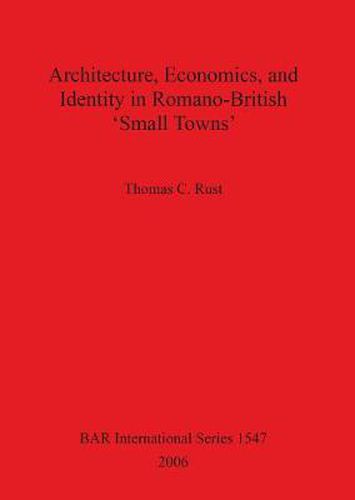Readings Newsletter
Become a Readings Member to make your shopping experience even easier.
Sign in or sign up for free!
You’re not far away from qualifying for FREE standard shipping within Australia
You’ve qualified for FREE standard shipping within Australia
The cart is loading…






This title is printed to order. This book may have been self-published. If so, we cannot guarantee the quality of the content. In the main most books will have gone through the editing process however some may not. We therefore suggest that you be aware of this before ordering this book. If in doubt check either the author or publisher’s details as we are unable to accept any returns unless they are faulty. Please contact us if you have any questions.
By examining the development of architecture in the small towns of Roman Britain, this work seeks to shed light on the socio-economic backgrounds of the growth of these towns. Focusing on the process rather than the end result, the author demonstrates that these processes reflected socio-economic complexities ignored under the idea of ‘Romanization’. The saliency of a Roman identity was not equally strong at every site, nor was the investment required to produce stone architecture the same. Many different identities remained present at each site, even those with masonry traditions. The choice in architecture was not a benchmark of Roman identity but rather part of a larger process whereby individuals negotiated personal and civic meaning for the roles they played. Economic forces also affected that negotiation process and consequently its architectural manifestations. Thus, the resonance of identity with the economic factors unique to each town resulted in architectural traditions.
$9.00 standard shipping within Australia
FREE standard shipping within Australia for orders over $100.00
Express & International shipping calculated at checkout
This title is printed to order. This book may have been self-published. If so, we cannot guarantee the quality of the content. In the main most books will have gone through the editing process however some may not. We therefore suggest that you be aware of this before ordering this book. If in doubt check either the author or publisher’s details as we are unable to accept any returns unless they are faulty. Please contact us if you have any questions.
By examining the development of architecture in the small towns of Roman Britain, this work seeks to shed light on the socio-economic backgrounds of the growth of these towns. Focusing on the process rather than the end result, the author demonstrates that these processes reflected socio-economic complexities ignored under the idea of ‘Romanization’. The saliency of a Roman identity was not equally strong at every site, nor was the investment required to produce stone architecture the same. Many different identities remained present at each site, even those with masonry traditions. The choice in architecture was not a benchmark of Roman identity but rather part of a larger process whereby individuals negotiated personal and civic meaning for the roles they played. Economic forces also affected that negotiation process and consequently its architectural manifestations. Thus, the resonance of identity with the economic factors unique to each town resulted in architectural traditions.